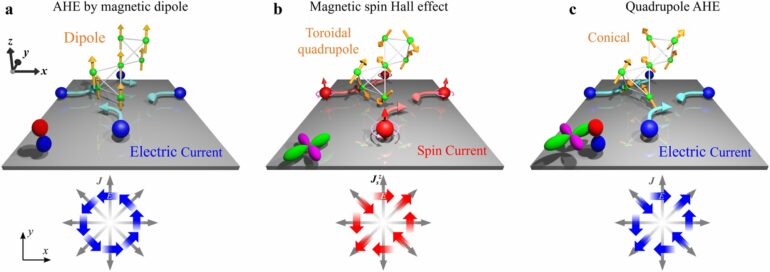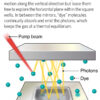Researchers at the University of Tsukuba and NIMS have observed a novel Hall effect wherein the deflection direction of current varies according to the current flow direction. Onsager’s reciprocal theorem, a fundamental theorem in materials science, asserts the impossibility of such a phenomenon. However, the researchers found that the observed phenomenon could be explained without contradicting the reciprocal theorem by assuming an unconventional magnetic arrangement.
The Hall effect, or anomalous Hall effect, occurs when electric current flows through a conductor or magnet in a magnetic field, generating voltage perpendicular to the electric and magnetic field directions. Onsager’s reciprocal theorem states that the deflection direction of electrons remains constant, irrespective of the current’s direction in the plane perpendicular to the magnetic field or magnetization.
In a new study, for the first time, researchers have observed an anisotropic anomalous Hall effect in a spinel oxide NiCo2O4 thin film with conical magnetic anisotropy; this characteristic depends on the current’s direction. The findings are published in the journal Nature Communications.
To understand this phenomenon, researchers considered the symmetry of the experimentally observed anisotropic anomalous Hall effect from a phenomenological perspective. The findings indicated the involvement of a magnetic structure called a clustered magnetic toroidal quadrupole.
Consequently, the team proposed a physical model that explained the anisotropic anomalous Hall effect without violating Onsager’s reciprocal theorem. This model successfully accounts for the coexistence of the magnetic toroidal quadrupole and ferromagnetism due to conical magnetic anisotropy.
More information:
Hiroki Koizumi et al, Quadrupole anomalous Hall effect in magnetically induced electron nematic state, Nature Communications (2023). DOI: 10.1038/s41467-023-43543-1
Provided by
University of Tsukuba
Citation:
Discovery of a new Hall effect: Does it violate Onsager’s reciprocal theorem? (2023, December 14)



